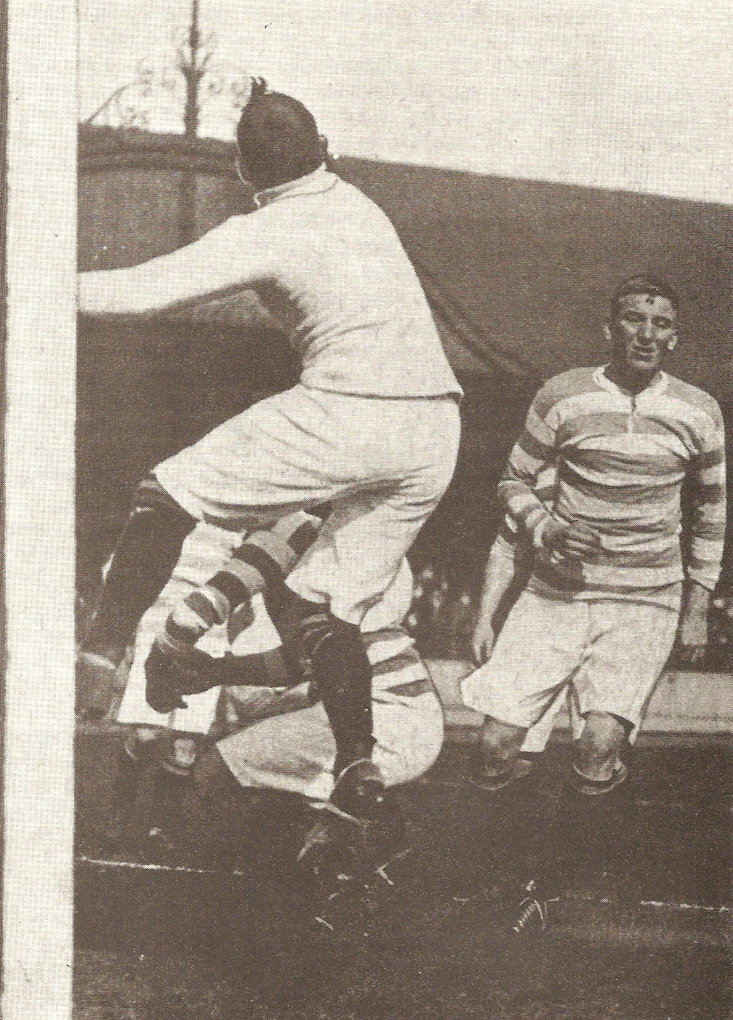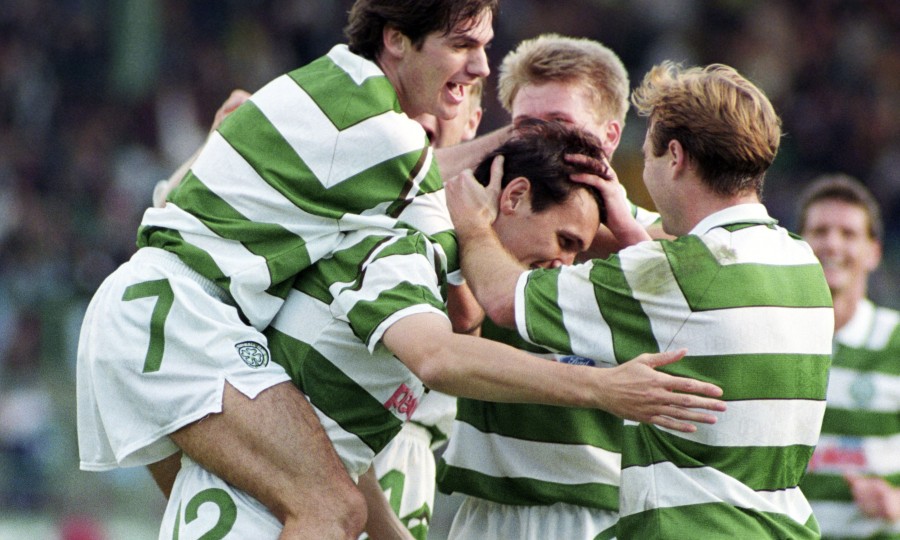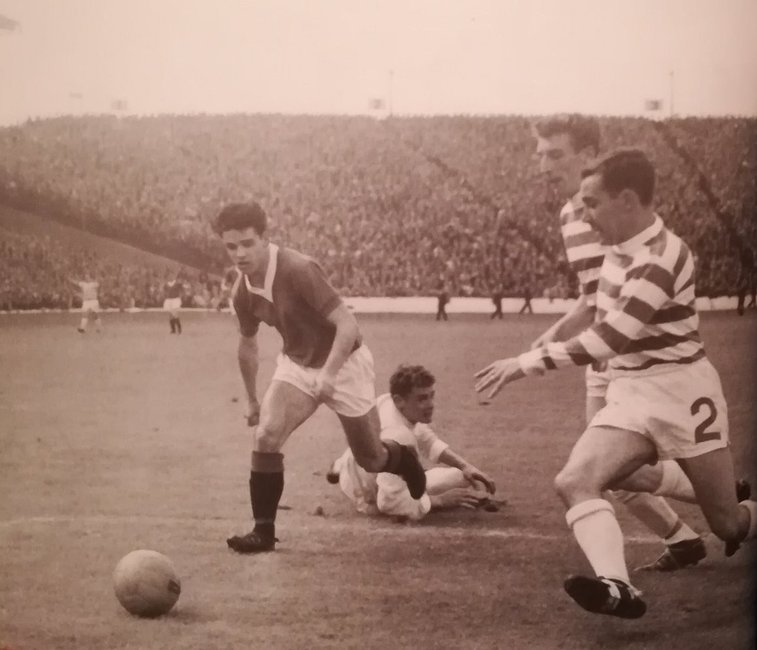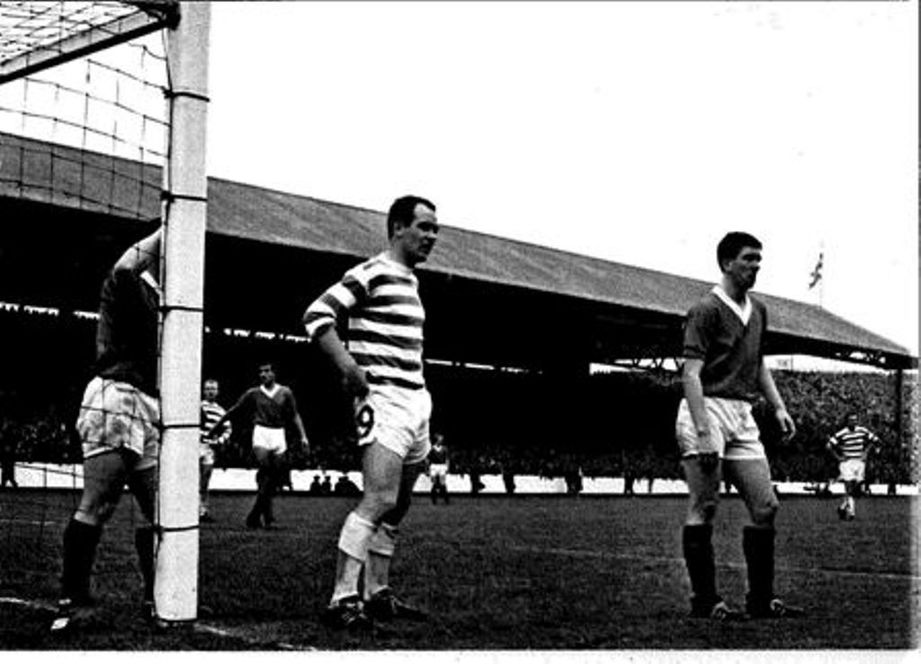DAVID POTTER’S Seven Magnificently Random Celtic Stories continues this morning and as usual there are some fascinating tales her for you to enjoy…
1. SUNNY JIM THE GOALIE
Sunny Jim Young was a mighty man who dominated and inspired Celtic in the great days of the Edwardian era. Normally a right-half but very versatile, he was a great man to have around. In the early days of 1909, his versatility took on another dimension. Sunny was injured and was upset to miss the game against Rangers at Ibrox on Friday 1 January 1909, a game which Celtic nevertheless won 3-1. But in that game, goalkeeper Davie Adams was injured, and Celtic did not have a goalkeeper handy for their game at Kilmarnock the following day, and on New Year’s night it would have been no easy matter to find another in time.

Sunny then approached Maley with a suggestion. His ankle was improving and although he could not play in his normal midfield role, why couldn’t he play in goal? Maley reluctantly agreed, for there was no option, and Sunny played in goal. Sadly, the team lost 1-3 but The Glasgow Herald says that Young coped “admirably”.
2. TONY CASCARINO
Just what was this fellow’s problem? Still seen on SKY TV talking knowledgeably about the game, but could he play himself? Supporters of Millwall, Aston Villa, Chelsea, Olympique de Marseilles and the Republic of Ireland may well think he could. Celtic supporters who were around in the 1991/92 season may beg to difer.

He had a remarkable game on 5 October 1991. Relegated to the bench for his inability to score goals, he was brought on as a substitute for Charlie Nicholas in a game against Hearts at Parkhead, scored his first ever goal for the club with a miskick and then got sent off for throwing a punch at Craig Levein! All in the space of 15 minutes! You couldn’t really make that up, could you?
3. 1963/64 THE YEAR OF THE RANGERS COMPLEX
Season 1963/64 was in fact a good season for Celtic with many fine performances and a good run in Europe which took them to the semi-final of the European Cup Winners’ Cup. The problem was Rangers to whom Celtic lost five times 0-3 and 0-3 in the League Cup in August, 1-2 in the League in September, 0-1 in the League on New Year’s Day and 0-2 in the Scottish Cup in March.

An analysis of each of the five games reveals an astonishingly similar pattern of Celtic being well on top in the first half-hour, but failing to make their advantage count, then a cruel break in the shape of a refereeing decision, a defensive error or an apparently net-bound shot hitting the post, then a collapse and the collective belief that spread throughout the dressing room, the board room and the terracing that, somehow or other, Celtic were not allowed by some malevolent deity to beat Rangers.

Rangers won the treble in 1964 but made absolutely no impact on Europe which leads historians to wonder how they would have done in Scotland if Celtic had showed more belief in themselves. It took Jock Stein to rid Celtic of this death wish.
4. THE YEAR AFTER THE YEAR BEFORE
Everyone knows how good 1967 was. Some of us think that the spring of 1968 (and 1969 for that matter as well) although showing less obvious success in terms of trophies, revealed a great deal more about the character of that great side.
In 1967/68 although the League Cup had been won, there had been major disappointments as the team blew up in the first round of the European Cup against Dinamo Kiev and in the first round of the Scottish Cup against Dunfermline, leading to all sorts of suggestions of “one season wonders”, “flukes” etc. There was also of course the South American fiasco which reflected no credit on anyone.
The Scottish League also seemed to have gone when goalkeeping errors gave Rangers an undeserved draw at Parkhead on 2 January 1968. Rangers were two points ahead and as the teams played each other only twice, Celtic would have no other opportunity to beat them. They were indeed “needing snookers” in the shape of other teams beating Rangers, and this did not look like happening.
But psychology now played a part. Stein realised that if Celtic kept winning and winning well by playing brilliant football, Rangers under a new, inexperienced and raw manager called Davie White, would crack under the pressure.
Charlie Gallagher and Jim Brogan were brought into the team, great victories, particularly away from home in a four-in-a-row run at St.Johnstone, Dundee United, Hearts and Aberdeen were recorded and you could almost hear the Rangers edifice buckling. Their withdrawal from the Glasgow Cup (apart from being an insult to a grand old tournament) allowed Celtic supporters to claim that Rangers were afraid of Celtic, and then Dundee United, smarting from their 5-0 defeat by Celtic a few days previously and looking to redeem themselves in the eyes of their supporters, took a point off Rangers to bring their lead down to one point.
Then Morton on the night of 17 April , while Celtic were winning the Glasgow Cup (which Rangers had scorned) in a wonderful 8-0 defeat of Clyde, did the same and thus the teams were level on points but Celtic had a far superior goal average. The same Morton then almost took a point off Celtic, but Bobby Lennox scored a scrappy goal in the last minute to keep Celtic ahead, and then Rangers, their confidence shattered, folded in their final League game of the season to an incredulous Aberdeen side at Ibrox.
Celtic thus won the League while watching the Scottish Cup Final (Dunfermline beat Hearts 3-1) and that must be some sort of record as well! The final word on this remarkable season must come concerning John Fallon, the Celtic-daft redhead who had the misfortune to concede the two goals to Rangers which for so long looked as if they had lost the League. On the pivotal night of 17 April, he was played at Parkhead in a reserve match against Raith Rovers. Ball boys kept telling him the score at Morton and Hampden, and he left the field at Parkhead that night neither knowing nor caring what the score was in the game in which he had been playing!
5. PENALTY SHOOT-OUTS
It would be a fair statement that Celtic and penalty shoot-outs do not go together. Three particular horror stories spring to mind. One was the European Cup semi-final at Parkhead on 19 April 1972 when after ninety goalless minutes at the San Siro, another ninety goalless minutes at Parkhead and then another thirty minutes of extra-time at Parkhead, a penalty shoot-out was ordered. There were nine saints and one sinner, the unfortunate man being Dixie Deans who took Celtic’s first penalty and put it over the bar.
A few heartless morons barracked and booed him, but Dixie only took seventeen days to go from zero to hero when on 6 May he scored his famous hat-trick for Celtic in the 1972 Scottish Cup Final against Hibs.
A less happy Scottish Cup Final came in 1990. 12 May 1990 saw a poor Celtic side play above themselves to earn a deserved 0-0 draw with favourites Aberdeen. Extra-time failed to separate the sides and the Cup went to penalties for the first time ever. Both teams were better at taking penalties than in the other skills of the game that day, and the final score ending up 9-8 for Aberdeen with Dariusz Wdowczyk and Anton Rogan being the unlucky Celtic players who missed.
It was a painful Cup Final, but had we known what would happen to Aberdeen over the next 20 years, we might not have been quite so jealous of them. Indeed most decent Aberdeen supporters admitted that it was a dreadful way to win the Scottish Cup.
And then we come to that awful day of 27 November 1994. The Scottish League Cup Final was between Celtic and First Division Raith Rovers. It was vital to Celtic in that, although the wicked old Board had been ousted and a new regime was in place, success was not yet coming to Tommy Burns and the League Cup was badly needed to kick-start the season.
It was a good game, played at Ibrox because Celtic were playing their home games at Hampden that season. Raith went ahead, then Andy Walker equalized with a fine header before Charlie Nicholas scored what looked like the deserved winner late in the game. Sadly, Gordon Marshall could not hold a Jason Dair drive and Gordon Dalziel headed home an equalizer. Extra-time, fruitless and futile with two tired teams, followed and we moved to the penalty shoot-out.
It was 5-5 before sudden death became necessary and after Raith scored to make it 6-5, Paul McStay, by some distance the best Scottish player of that era, had the misfortune to have his effort saved by goalkeeper Scott Thomson. No-one could really grudge the Kirkcaldy men their one and only moment of glory, but for Celtic the pain was intense and long lasting.
We’re not going to even consider the most recent penalty shoot out disaster against the Rangers at Hampden in April 2016. It had a happy ending of sorts with Hibs winning the Final – the last Scottish team outside Celtic to win a major honour – and led to Celtic achieving a remarkable Treble Treble.
6. CELTIC’S HOME CUP FINAL
Celtic Park has hosted the Scottish Cup Final on a number of occasions – 1913, 1921, 1993 and 1998 for example, when for one reason or another Hampden Park or Ibrox was not available. But in
1902, Celtic Park had to be used even though Celtic were one of the competing teams. 5 April 1902 saw the terrible Ibrox disaster in which 26 people lost their lives at the International between Scotland and England, and it was hardly appropriate to use Ibrox for the Scottish Cup final between Celtic and Hibs so soon after the tragedy.
The new Hampden was still being built (it would open in 1903) and the old Hampden was deemed too small now for a Scottish Cup Final crowd. Thus it was that Celtic Park was deployed for Celtic v Hibs. It was a far from happy occasion for Celtic lost 0-1 to the team that some regarded as the “parent club”, but it is to be hoped that Hibs enjoyed winning the Scottish Cup of 1902, for 110 years further on Hibs have failed to win it again. The joke however that the last time Hibs won the Scottish Cup, Edinburgh was granted a half-holiday by the delighted Mary Queen of Scots is not quite true. But it 1902 their players certainly ruffled a few Celtic feathers by adapting the Boer War song “Goodbye Dolly Gray” to…
Goodbye Celtic we must leave you
Though it breaks our heart to go
We are off to Embra
The Scottish Cup to show!
7. GEORGE CONNELLY ENTERTAINS
George Connelly was one of the best natural football players that Celtic have ever had, and his sad inability to cope with the emotional side of playing professional football for a top team in the 1970s was a sad loss to Celtic, Scotland and himself. But his first public appearance came on 12 January 1966 at half-time in a European Cup Winners Cup game between Celtic and Dinamo Kiev when he entertained the fans with a brilliant and prolonged display of ball control.
It was one of Jock Stein’s stunts which reflected well on Celtic and encouraged the (correct) view that Celtic’s youngsters simply hotched with talent. Before his sad departure and lapse into depression and alcoholism (honestly detailed in his book “Celtic’s Lost Legend”), George won four Scottish League medals and three Scottish Cup medals.


